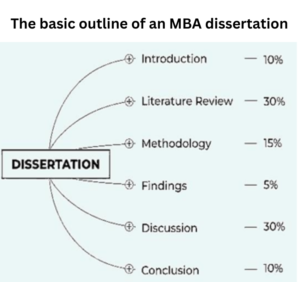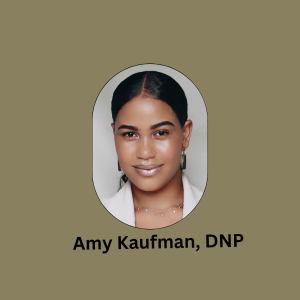DIY vs. Professional Capstone Editing: Pros and Cons
This article right here will discuss DIY vs. professional capstone editing: pros and cons. I’ll show you the do’s and point to the definite don’ts. I’ll compare both approaches based on factors like quality, cost, and adherence to research timelines. In the end, you get to choose the best fit. You could go solo and become the faculty’s cautionary tale, hire a pro to polish your draft, or maintain your A+ grades with editing assistance from helpwithdissertation.com altogether!
5 Aspects of a Capstone Project Paper You Should Edit
Each of the classical 5 chapters of the capstone project paper should be edited. Scratch that – proofread EVERYTHING. I mean, don’t submit your 100th draft if you’ve not given all sections a scholarly once-over.
#1: Start with the introduction and literature review
Check for the clarity of your thesis statement and research questions. Scrutinize the relevance and authority of citations. Existing literature should comprehensively address the capstone project topic and point to visible knowledge gaps that prompted your study.
#2: Scour the methodology for flaws
Justify the project’s theoretical framework, the tools used in research design, project data collection methods, and your analysis techniques. For example, does the chosen methodology answer the research question comprehensively?
#3: Comb the results and discussion chapters
Address major research limitations that impact the interpretation and application of your study findings. Connect all duplicable findings to your research question in concise terms.
#4: Relook at the conclusion and recommendations
Capstone project paper editing ensures recommendations are well-articulated and actionable. Support your conclusions with solid evidence. Further, talk of any uphills the capstone project threw your way.
To learn more on how to write conclusion and discussion chapters see the link below
Guide to Write Discussion and Conclusion Chapters for an MBA Dissertation
#5: Check through the references
Always check through the reference list to ensure compliance with the faculty’s preferred referencing style. Although it’s never considered mainstream editing, in-text citation and writing a bibliography are tough tasks for many students.
Use either British English or American English consistently throughout the capstone paper. Place your capstone proofreading order with us and allow native English speakers to work their magic!
3 Major Reasons Why Capstone Project Paper Editing is Important
The major reasons why capstone project editing is important are pretty obvious:
I. Professional presentation that upholds high academic standards
Am yet to see a university that admits anything short of a professionally presented capstone project report. Editing confirms your adherence to meticulous academic writing style guidelines and formatting requirements. We’ve assisted thousands of students to submit polished capstone project papers over the 13+ years of existence.
Want to flaunt attention to detail and an unlimited commitment to quality in your capstone paper? Talk to our 24/7/365 Customer Support Desk!
II. Clarity of communication and logical flow of research ideas
Admit for once – your final draft of the capstone project paper is a mishmash of facts (doesn’t matter how much your drinking buddies praise it!) Editing organizes content in logical sequence, ensuring fluid transition between sections or arguments. Revising sentence structures and wording improves the clarity of research ideas, making things easy for the audience.
We could’ve flipped attempt one’s grades in your favor, but you don’t TALK TO US! Make take two count and scream your way to the top of the class with ProWriterz.com!
III. Prove you’re capable of critical scholarly analysis, and demonstrate academic accuracy / credibility
While editing, you solidify the arguments made in the capstone paper, critically reviewing the entire project and identifying areas for improvement. You also get to strengthen and refine the conclusions. Flushing grammar hitches, weeding out spelling errors, and ironing out language inconsistencies boosts the credibility and professionalism of your project paper.
Every student deserves an A+ grade for their capstone project paper. We provide excellent academic proofreading service at the most affordable price the internet has to offer!
DIY Editing, or Should I Hire a Professional Capstone Editor?
There’s a big debate on the pros and cons of DIY capstone project paper editing versus hiring experienced, professional capstone project editor. I discourage students from wagering on better grades for their capstone. Put our contacts on speed dial for whenever you’re unsure of what makes a winning capstone project paper.
Don’t let the critical capstone paper see the light of day without our thesis proofreading help, especially if you’ve face-planted in the past!
Pick two considerations between time, quality, or money while making a decision to hire professional editors. If you believe self-editing will produce a higher quality product, be ready to put in the works. Those that opt for our budget-friendly editing service saves lots of time, benefits from objective feedback, and exposes you to invaluable learning opportunities.
The Case for DIY Capstone Editing
Some sharp guy I know can’t, for the life of them, come to grips with the idea of hiring a proofreader for their capstone papers. Let me warn you, however, that not everyone can write a capstone paper that passes the rigorous standards expected at this level. Other students that move the case for DIY capstone editing give the following reasons:
❖ Cost-Effectiveness
DIY capstone editing saves you money compared to hiring online professional services. You save money on editing, but at the cost of long hours to replace the skills of an editor. What you gain from free or cheap proofreading tools like Grammarly, Hemingway, and citation generators is lost in lower quality.
See golden self-editing tips for your capstone paper here.
❖ Learning Opportunity
There’s probably no better way to improve academic writing and critical thinking skills than self-editing a capstone project paper. Academic chivalry places high value on understanding common personal mistakes, self-improvement, and refining one’s work. Learning the best editing techniques prepares you for the inevitable future of serious scholarly writing and publishing.
❖ Flexibility and Full Control
The beauty of personalized capstone editing is in the ability to work at your pace. You also maintain full control over the content while enjoying the convenience of independent learning. One thing to consider is whether or not the capstone project paper needs to be submitted soon – because you’ll certainly need us if the deadline is looming!
Self-editing works best if you’ve enough weeks or months to shelve the capstone paper before submission. Otherwise, building up a passable capstone paper from a manuscript in a week is pushing imagination too far!
Hire Us for Professional Capstone Editing
This is not a literal statistic, but only one in a thousand students make it on their first or only capstone project paper. The other 999 fellas, gather here and learn why you need to hire our editors and proofreaders for professional capstone editing services at affordable rates
Why Hire our Expert Capstone Project Editors
As a student running a tight budget you may be wondering why should i sacrifice my hard earned money to hire a capstone project editor at Help with Dissertation.
➔ We’re Renowned for Quality and Experienced Editing Experts
Our experienced editing team doesn’t just clean up your copy, they’ll teach you how to write grade-winning academic papers going forward. The proofreading support service isn’t so much what the experts do to your research paper, it’s how much better we’ll make your future scholarly writing!
Nowadays, it’s very difficult to find a quality, professional, and highly experienced online editing service you can rely on. That’s why our expert DNP project editors for hire are worth their weight in gold!
➔ Get Objective Feedback and Improve Your Writing Skills
We give unbiased, constructive feedback in a report attached to the objectively-edited capstone paper. The brutal truth points directly at your weaknesses, a starting point for academic improvement and to decorate the quality of your submission.
➔ Lastly, Save Precious Time With Us!
Hiring an editor from our pool frees up your time for other academic or personal commitments. We’ve the fastest turnaround times, even with the tightest deadlines. You can now confidently book a vacay or plan that wedding without the cumbersome proofreading coming in the way!
Trends in Capstone Paper Editing in 2025
Universities cannot ignore blossoming technology in academia such as automated proofreading and AI editing tools. Note that modern proofreading tools come with heavy plagiarism and ethical baggage, and then some tools are poorly trained leading to error prone work.
Limitations of AI-Powered editing tools
Progressive improvement of AI tools like DeepSeek, ChatGPT, and Jasper keeps churning the capstone project editing scene. Compared to human editors, bots have inherent challenges such as:
- You’ll have to declare bot assistance in your capstone project. That could either get the paper tagged or dungeoned altogether if you break the 20% AI Index According to many faculties, using AI to proofread is plain academic laziness, making you a “content creator” and never a serious researcher.
- Would you let a moron edit your capstone paper? No.
If you use a bot, you leave the capstone project editing to something that’s not even up to moron standards, yet!
- Bots have no context, no sense of time, and no ability to keep on topic or carry a theme. AI tools can’t tell fake facts from the real, won’t know if something changed, and are highly prone to hallucinations. Am saying machines can’t fact check, but our human editors will!
- You’ll learn nothing from a bot spitting out a newer version of your capstone project draft. Human editing is how wise students learn their blind spots.
Conclusion: Explore a Collaborative Editing Approach
Multi-step proofreading combines DIY and professional editing for optimal results. You can use AI tools for initial edits or making an outline, then hire our professionals for the final polishing. Ethical hybrid editing is a clear route to attain originality and compliance with academic integrity standards. It’s a one-stop checkpoint for academic integrity and plagiarism vetting.


 Written by: Amy Kaufman DNP, MSN, RN
Written by: Amy Kaufman DNP, MSN, RN